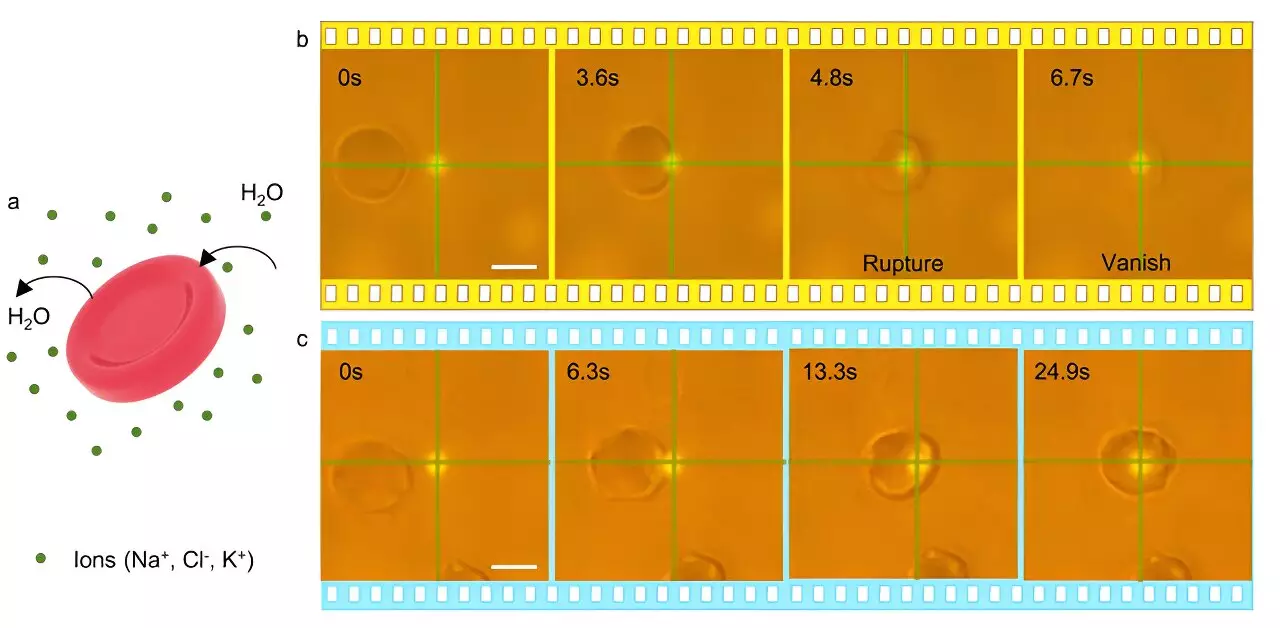Optical tweezers have revolutionized the field of scientific research by allowing scientists to manipulate tiny objects, such as cells and nanoparticles, using lasers. The development of this technology was recognized with a Nobel Prize in 2018. Now, researchers have taken this innovation a step further by using supercomputers to enhance the safety of optical tweezers when used on living cells. This breakthrough has potential applications in cancer therapy, environmental monitoring, and more.
The study, published in Nature Communications in August 2023, introduces a new method called hypothermal opto-thermophoretic tweezers (HOTTs). The researchers, led by Pavana Kollipara from The University of Texas at Austin, aimed to address the issue of excessive sample scorching caused by traditional laser light tweezers. By incorporating a heat sink and thermoelectric cooler, they were able to keep the targeted particle cool during the trapping process, thereby minimizing thermal damage.
The core idea behind HOTTs is simple yet effective. Instead of allowing the sample to be damaged by the heat generated by the laser, the researchers cool the entire system down before applying the laser beam. This approach ensures that the temperature of the trapped particle, such as a biological cell, remains close to the ambient temperature. By controlling the temperature, the scientists can use lower laser power without causing photon or thermal damage to the cells.
One of the major findings of the study was that HOTTs could safely trap and manipulate human red blood cells, which are known to be sensitive to temperature changes. Conventional optical tweezers often cause damage to the cell structure, leading to immediate cell death. However, HOTTs successfully overcome this limitation, allowing for safe manipulation, even when cells are dispersed in various solutions.
The application of HOTTs extends beyond cellular manipulation. The researchers demonstrated the trapping of plasmonic vesicles, which are tiny gold nanoparticle-coated bio-containers. This technique mimics the targeted delivery of drugs to cancer tumors. By guiding the vesicles to the tumor site and using a secondary laser beam, the drug cargo can be released precisely at the desired location. This targeted drug delivery approach reduces the amount of drugs a patient consumes and allows for more effective treatment.
The development and optimization of HOTTs would not have been possible without the support of supercomputers. The researchers utilized TACC’s Stampede2, a national strategic resource, for their simulations. The computational complexity of the system required extensive computational power and efficiency that local workstations could not provide. Through simulations performed on Stampede2, the researchers were able to compute full-scale 3D force magnitudes on the particles, taking into account the optical, thermalphoretic, and thermoelectric fields.
In addition to Stampede2, the researchers also utilized TACC’s Lonestar5 and now Lonestar6 systems for their plasmic biosensor research. These supercomputers, supported by the University of Texas Research Cyberinfrastructure (UTRC), have played a crucial role in facilitating extensive simulations required for the development of advanced optical tweezers and other biomedical applications. Laptop computers are inadequate for the computational demands of hardcore research and development, highlighting the necessity of robust research cyberinfrastructure.
The advancement of optical tweezers, particularly with the development of HOTTs, holds significant potential for various biomedical applications. The ability to safely manipulate cells and nanoparticles opens doors for improved cancer therapy, targeted drug delivery, and environmental monitoring. The involvement of supercomputers and research cyberinfrastructure in this field is crucial for tackling the computational challenges and accelerating scientific progress. As technology continues to evolve, optical tweezers will likely continue to play a vital role in pushing the boundaries of scientific discovery and innovation.



Leave a Reply